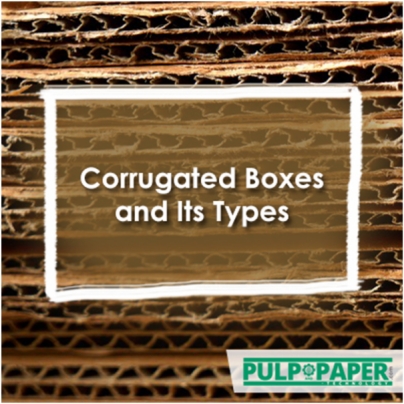Articles
Infrared Imaging

The technique of capturing invisible infrared images and converting them into visible images is called infrared imaging. It is done with a specialized camera, called an infrared imaging camera, which enables the user to visualize a scene more completely. Infrared imaging allows for non-destructive and non-invasive monitoring of machines and processes. It also allows users to create new methods of examining operations, which greatly helps in problem-solving.
Just like many other industries, the paper processing industry also enjoys many benefits when infrared technology is integrated into the process. With infrared digital cameras such as TI 32, a wide range of equipment and systems in a paper factory, such as electrical systems, motors and mechanical equipment, liquid levels in boilers and other vessels, heat loss and leakage throughout the plant, kiln walls for refractory breakdown, and steam traps and process lines for blockage; can be easily and quickly inspected.
Predictive and Preventive Maintenance (PPM)
Infrared (IR) inspection is a well-accepted method for checking electrical systems for short circuits, failing and defective components, and poor connections. Infrared cameras are used by maintenance engineers to check boilers and other vessels for liquid levels, heat loss and leakage, kiln walls for refractory breakdown, and steam traps and process lines for blockage. Infrared inspection is also effective for quickly checking product levels in lime silos and in suppliers railroad cars, detecting material buildup in lime kilns, determining the sludge level in storage tanks, and detecting problems in wet end vacuum pumps used for dewatering pulp. In addition, operations professionals use infrared cameras to scan building roofs and walls for moisture or structural problems and energy loss.
Process Monitoring
Infrared monitoring plays a vital role in maintaining paper quality and uniformity throughout the preproduction, forming, pressing, and drying stages of the papermaking process.
IR cameras can provide real-time infrared video imaging of temperature variations in the wet paper roll, which indicate variations in moisture distribution, which in turn affect paper strength, printability, and convertibility. Infrared imaging can also detect barring in the sheet due to size press or press roll wear, wet streaks in the sheet caused by plugged areas in vacuum rolls or vacuum boxes, problems with steam box actuators, condensate flooding, scale and corrosion on dryer cans and dryer can imbalance, plugged, wrinkled, perforated or burned areas in press felts, roll cover delaminations, and dryer spoiler bar location.
Infrared camera
An infrared camera is a non-contact device that detects infrared energy (heat) and is able to display it as a thermal image on a video monitor. Heat sensed by an infrared camera can be very precisely measured, allowing for not only the visual monitoring of the heat generated by equipment, but also to identify and evaluate the relative severity of heat-related problems.
Throughout the water removal process, there are many opportunities to negatively influence the sheet's profile and characteristics. Many of these problems can be traced through infrared imaging to their original causes, thus helping to eliminate them for the future. It also helps in investigating, observing and maintaining sheet properties. As the customers' requirements in paper increases, infrared digital cameras can control surface humidity of paper so as to control its temperature, therefore improving the productivity and quality.
IR cameras also enhance safety by detecting fire hazards such as hot spots in chip piles and in electrical equipment and wiring, detecting potential kiln ruptures, and imaging debarking baths for logjams. The camera can also see liquid levels in large storage tanks. This makes early detection of leaks possible, thus avoiding costly failures and downtime.
Infrared thermometers
Infrared thermometers currently are being used in a wide range of industrial and laboratory temperature control applications. Industrially, they are used in manufacturing, quality control, and maintenance and have helped companies increase productivity, reduce energy consumption, and improve product quality.
Some applications of radiation thermometry include the heat treating, forming, tempering, and annealing of glass; the casting, rolling, forging, and heat treating of metals; quality control in the food and pulp and paper industry.
Non-contact thermometers have a response time in milliseconds and can be used from a distance with high accuracy. A variety of detectors with different spectral response enable users to select sensors depending on the object and application with rugged water cooled housings available for operation in ambient temperatures up to 315°C and boiler internal temperatures up to 1200°C.
Infrared Scanners
Typical applications for the infrared scanner include high-speed rotating soft calendar rolls, plastic and steel extrusion machinery and slow speed rotating kilns. Infrared scanners can also be used for area inspections like monitoring temperature changes in factory areas or process bins. Pre-processing, linearization and calculation of the true temperature are all performed in the scanner prior to transfer. High scan and data transmission speeds enable rapid online thermal imaging of fast moving extrusion processes.
Temperature profiles and images can be archived for future analysis or printed for quality certification. The graphic scanner displays real-time profiles and thermal images of edge-to-edge product temperature, allowing machine operators to zoom into the temperature profiles to get an instant on-screen analysis. Using these graphical displays, operators can detect process temperature non-uniformities and make immediate corrective adjustments.
Today the pulp and paper industry is facing severe market pressure to ensure higher quality, deliver faster and maintain low prices. Various paper industries make extensive use of infrared heat technology in processing and maintenance. Infrared imaging is uniquely effective for predictive maintenance and process monitoring in paper mills. In fact, infrared digital cameras like TI 32 have become a key factor in ensuring timely delivery, maximizing productivity, maintaining product quality and, of course, preserving profits.
In the course of process monitoring, infrared imaging is used to check bearings in the sheet and roller feed lines and monitor the temperatures inside coating kilns. An infrared imaging inspection of paper coming off the mill can even reveal a failing dryer roller. If the new paper has a wet spot, it could be invisible to the eye, but not to the, infrared digital camera.
As the paper market is becoming increasingly competitive, with customers demanding higher and higher quality specifications. The unique effectiveness of infrared inspection for predictive maintenance and process monitoring tasks in paper mills has become a central factor in assuring uptime, maintaining productivity and product quality — and preserving profits.



